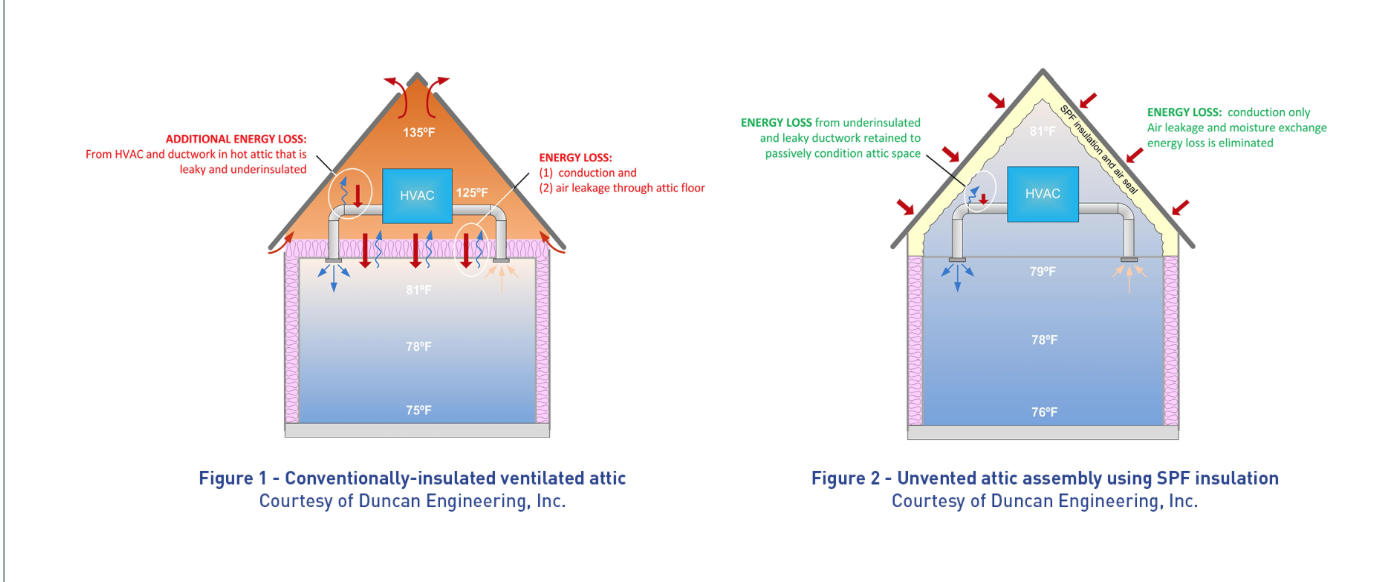
Spray Foam Insulation and California’s Goal for Zero Net Energy
WASHINGTON, D.C. – July 1, 2016 – Residential and commercial buildings together in the United States account for about 40 percent of total energy consumption – a greater share than either the industrial or transportation sectors. Furthermore, residential energy consumption exceeds commercial, accounting for 22 percent of total primary energy consumption. California has been a leader in reducing energy consumption and greenhouse gas emissions from the buildings we live and work in. In 2007, the California Public Utilities Commission (CPUC) announced an ambitious goal to make all new homes in California zero net energy (ZNE) by 2020. In addition to government engagement, consumer demand for energy efficient homes has increased and high-performance buildings are becoming the norm.
Spray polyurethane foam (SPF) insulation can substantially reduce energy needs and costs by providing a versatile building enclosure solution that meets new insulation requirements.* A ZNE home produces as much energy as it consumes over the course of one year through energy efficient designs supplemented with on-site renewable sources. As a result, new ZNE homes will require builders to increase insulation R-values and decrease air leakage for maximum energy efficiency using products like SPF. Installed as a single product to provide a layer of insulation in walls, floors and ceilings, SPF significantly reduces heating and cooling loads, and minimizes energy loss.
RELATED Spray Polyurethane Foam Alliance Encourages Proper Insulation and Seal of Buildings to Reduce Asthma Triggers, BUFCA Celebrates 30th Anniversary Leading the Spray Polyurethane Foam Industry, New Homes Attract Consumers Looking to Save on Energy Costs
A typical home can lose as much as 40 percent of its energy through cracks and gaps in the walls and roof. As part of California’s drive for all new ZNE homes, the California Energy Commission (CEC) released the 2016 Title 24 requirements for new single-family residential buildings set to go in effect on January 1, 2017. Key changes include the addition of high-performance walls (HPWs) and high-performance attics (HPAs).
The new HPW and HPA requirements will enable builders to increase the energy efficiency performance of homes through existing designs and materials. As an example, constructing an unvented attic (UVA) with SPF insulation is a proven HPA design. This design uses SPF applied to the underside of the roof deck to seal attics from air infiltration, effectively bringing the space into the conditioned building envelope and providing energy savings.
Example of attics without and with SPF:

To assist builders, the Spray Foam Coalition released a guidance document that walks users through the techniques for modeling SPF UVA design using Title 24-approved software tools. Modeling demonstrates that an UVA design using R-22 SPF outperforms existing requirements for attic insulation; a design using R-28 SPF outperform the new 2016 prescriptive insulation requirements for attics.
*Savings vary. Find out why in the seller’s fact sheet on R-values. Higher R-values mean greater insulating power.














